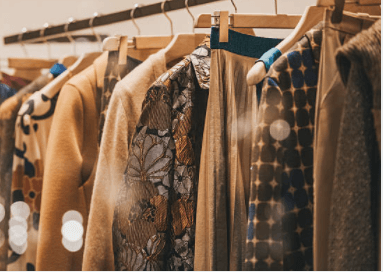

Fashion designing is the art of designing dresses and accessories. Designing Can be explained as art while viewing attire and adornments’ aesthetics and beauty parameters. Fashion trends fluctuate every time and adjust to reflect social and cultural impacts.
Each garment or embellishment initially begins with a creative idea. However, it is possible to make these strategies more effective by utilizing style designs to decide everything from the creative vision to the market survey directing the production, the fabric used, the general aesthetic message, and many others to achieve the result. The best fashion designing college, the J.D. Institute of Fashion and Technology, provides you with the best courses to train your mind.
If you invest any time studying fashion, you will likely go over the different sorts of designs. Of course, the names of these apparels might differ marginally depending on the source. However, the idea behind the hierarchy remains the same.
Apparel designing generally can be divided into different levels, and keeping in mind that there exists some sub categorization, there are five principal kinds of designing, which are as follows:
· Haute couture fashion
· Luxury fashion
· Ready to wear fashion
· Fast fashion
· Economy fashion
We will cover all of these kinds of clothing exhaustively underneath, yet as a rule, these designs start with Haute fashion, which is the most skilled one. While on the other hand, economy fashion is the least expensive and of the cheapest quality.
Haute fashion is at the top of the fashion hierarchy. Haute couture is in a real sense French for “high dressmaking” and started with specially made pieces of clothing sewed for private customers. This type of fashion includes the formation of restricted, custom-fitted apparel and accessories that are individual masterpieces.
Haute couture pieces tend to come out manually, which requires a lot of workforce and person-hours. It is common for an atelier or studio to consist of a whole group of talented teammates working on and making the details together. The pieces can require a few fittings to consummate and be made with the best materials and valuable thoughts. These pieces are often unique which stand out among the rest, focusing equally on all intricate details.
The position of Haute Couture Fashion Designer requires that the French government should assign style architects. In addition, designers should possess an atelier in Paris, have no less than 15 full-time employees, and deliver a minimum of 35 new, unique looks to the public two times every year. These rules were set up in 1945 and should be clung to rigorously, even by the most fabulous style houses.
Luxury style establishes the style plan that overcomes any issues between exclusive, bespoke, customized clothing and mass-created, readily available clothing. This particular apparel incorporates excellent pieces of clothing that are not hand-made but, at the same time, are not created in enormous amounts.
Because this luxury fashion has a little bit of an exclusive collection of clothing, it very well may be more attractive to only some since it has restricted availability. This apparel can fluctuate in quality, yet it usually comprises more costly materials and nuanced plans. With this point comes a more exorbitant cost tag.
While luxury fashion design things are not as costly as haute couture things, the costs are sufficiently high, giving buyers a feeling of being essential for a tip-top market. And as a result, this portion of the precarious costs sets things outside the purchasing scope of many mediocre customers.
The luxury design market is continuously growing, and it is relied upon to keep growing for a long time to come. Thus, there will always be a good demand for talented style creators in this market sector.
In contrast with the Haute fashion designs, ready-to-wear, also called prêt-à-porter, is bulk-produced in standardized sizes. Ready to wear design focuses on delivering fascinating articles of clothing that follow the latest fashion trends in the market. These articles of clothing are more open, accessible for buying by general society in massive amounts, with varieties in sizes to fit in a lot more body sizes than Haute fashion, which typically caters for unique individuals. Therefore, designers must constantly work to keep steady over current style to deliver different assortments each year.
Most clothing brand names that average shoppers know about are doubtlessly fast fashion brands. Fast fashion apparel design comprises mass-created clothing with a high-speed turnover rate.
The driving thought behind this style is the longing to put popular, attractive apparel available as inexpensively as could in the market. These designs generally hop from catwalk shows to retail holders in a lightning-speedy process. This particular apparel delivers different pieces each week.
At the lower part of the fashion hierarchy comes economic design. The sole aim of the most economical fashion is for the maker to make money, so typically, the least expensive work and material is used. Therefore, this apparel comes even below fast technique with a definitive objective to mass-produce articles of clothing most proficiently and boat them to stores.
Economic apparel might take general motivation from the latest social trends; however, they regularly can’t duplicate the exact patterns because of their limited budget and time constraints. Economy style begins by delivering a monstrous amount of attire, which will then, at that point, be available for purchase at a moderately minimal expense. It is also the least environmentally friendly fashion. The significantly inferior quality guidelines bring about a short life expectancy for articles of clothing, and pieces are delivered on a slower premise, making them unfashionable as a whole.
This style is generally attractive to people who don’t have an enormous financial plan to spend on apparel or have no interest in purchasing quality attire.
We at the J.D. Institute of Fashion & Technology have the best teams of professionals trained in different apparel. Therefore, we assure you of the best guide to learn and enter into the design of your choice at the best fashion designing course fees.